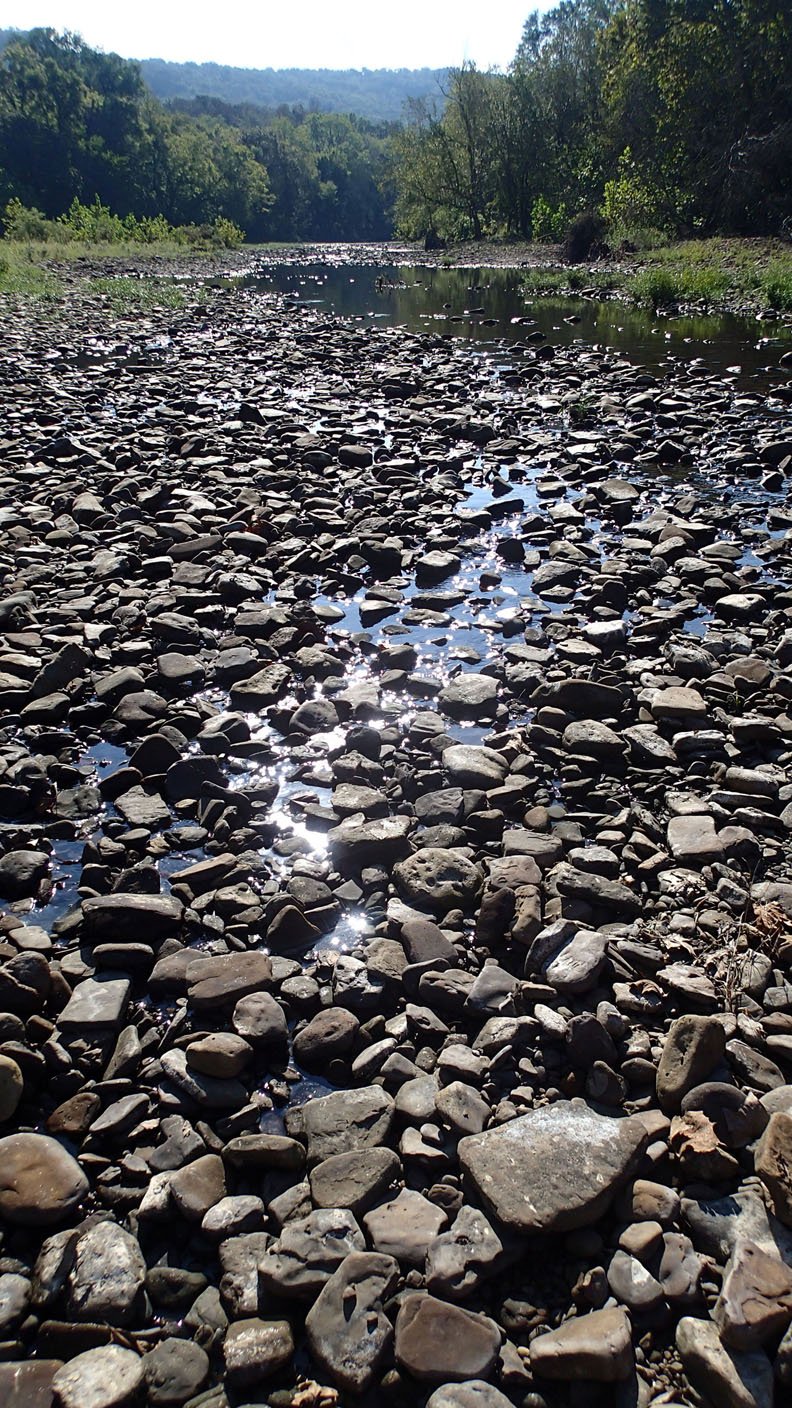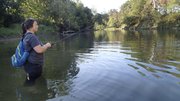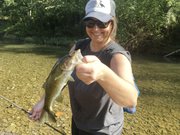Big fish swim in small waters when Ozarks streams shrink to low levels in autumn.
A glance at the Middle Fork of the White River on the first day of fall gave the impression that maybe a few little sunfish could be caught from the shallow, watery ribbon. Becky Roark shattered that idea by wrangling a 14-inch smallmouth bass from an oval pool with her "secret bait."
Work for clean water
The Beaver Watershed Alliance formed in 2011 to work to maintain high quality drinking water in Beaver Lake and improve water quality in the lake watershed.
The alliance represents a diverse group, from conservation, education, water utilities, business, agriculture, recreation and local government, working together for clean water.
— Source, Beaver Watershed Alliance
"Man, he annihilated it," she said, removing a hook from the bronze sport fish. Roark let her secret lure sink to the bottom. "And when I picked it up, he grabbed it. This is the biggest smallmouth I've caught out of this stretch."
Eventually she let on that a single-tail green grub is her secret lure on the Middle Fork and other streams that twist through the hill country. Wading gets her to the fish when the water is low.
Roark and John Pennington, both of Fayetteville, are fond of wade-fishing the Middle Fork of the White west of Elkins.
"It's close to Fayetteville, but when you get out here it's like you're in the middle of nowhere," Pennington said.
The Middle Fork meanders north through Washington County. It forms Lake Sequoyah on the east edge of Fayetteville before joining the main White River downstream.
Pennington floats it when flows are higher. Walking beat paddling as fall arrived on Sept. 22. The seasons changed at midafternoon on a clear day.
Shallow shoals barely wet their sandal soles. Moist rock shimmered like precious stones in the midmorning sun. Roark and Pennington hiked upstream ignoring the shallows, but fishing the pools on a 2-mile stretch of the Middle Fork.
Some of the little lagoons appeared smaller than a back-porch hot tub. Others were larger, but none over waist deep. Roark's 14-inch smallmouth came from a tub-sized pool. Pennington's biggest would come later from a like-sized hole.
The Middle Fork served up surprises all morning. The two hooked smallmouths, largemouth bass and sunfish, then carefully released them.
Along the way, they made mental notes on the condition of the stream bank. Both work for the Beaver Watershed Alliance. The group's mission is to protect the water quality of Beaver Lake mainly by working with landowners on Beaver's tributaries such as the Middle Fork.
Roark is outreach coordinator at the alliance. Pennington is executive director. Beaver Watershed Alliance also works with landowners along the West Fork of the White River, main White River, War Eagle River and smaller tributaries.
Sediment is the biggest polluter of Beaver Lake, Pennington said. Tons of it wash into the lake during floods that erode stream banks. The alliance gives landowners free seedling trees to plant to stabilize the bank and reduce erosion. Dozens of species are available.
Other sediment prevention includes pasture renovation where slits are cut into the soil to reduce runoff into streams. Forest management is another. The alliance can also help landowners install culvert on their private gravel roadways. That way water goes under the road, not over it, so less dirt and gravel washes into a stream.
"In some cases, we can pay all of the cost through grants. Others pay part of the cost. Some landowners just want to know the good things to do, and they'll do them on their own," Pennington said.
"We just started working with people on the Middle Fork last year, and landowners are showing lots of interest," he said.
Roark and Pennington turned attention back to their fishing rods. Both poles were bent deep with their first double of the day. Pennington admired his big fish of the day. Roark wiggled the hook of her secret bait from the maw of her smallmouth.
The bass Pennington held equaled Roark's 14-incher in size. Pennington's "hillbilly measuring stick" -- his arm -- gauged the fish's length.
"If it goes from my elbow to this crease in my hand, it's 15 inches. It if goes to this crease, it's 19."
Pennington let the fish swim back to its low-water lair on the Middle Fork.
Flip Putthoff can be reached at [email protected] or on Twitter @NWAFlip
Sports on 10/17/2017




